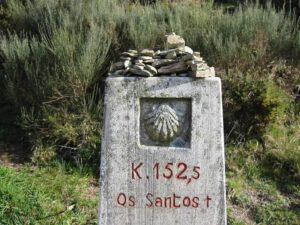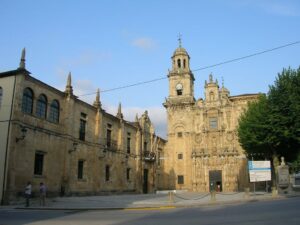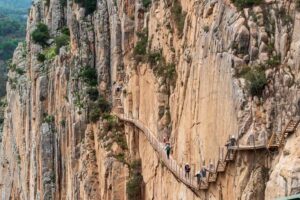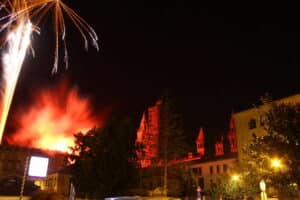
On an ordinary morning, you lace up your boots, adjust your bag and take the first step. Unbeknownst to you, beyond the miles, hidden stories, buried symbols and centuries-old traditions await.
The Camino de Santiago is not just a path; it’s a living museum, a web of symbols, and a reflection of European history. If you thought you knew it all, prepare to discover some fascinating facts about this renowned pilgrimage route.
Índice de contenidos
- 1 Different Routes to Santiago
- 2 Monte do Gozo: The Joy of the First Glimpse
- 3 Camino de Santiago’s Kilometre Zero
- 4 The Scallop Shell: More Than a Souvenir
- 5 Pilgrimage by Boat: An Official but Lesser-Known Option
- 6 The Growing Trend of Walking the Camino in Reverse
- 7 The Yellow Arrows: A Modern Symbol of the Camino de Santiago
- 8 The greeting “Ultreia”: encouragement among pilgrims
- 9 The Botafumeiro: a symbol of purification
- 10 The Wine Fountain in Ayegui
- 11 Cruz de Ferro: Leaving burdens behind
- 12 Portomarín: The town that moved stone by stone
- 13 The chimes of the Berenguela Tower
- 14 The Game of the Goose and the Camino de Santiago
Different Routes to Santiago
Each Camino route holds its own stories, symbols, and traditions that make it unique. No two routes are the same—and that’s part of its magic. Here are some curious facts you may not know:
Before embarking on your Camino de Santiago journey, did you know there are over a dozen official routes recognised by the Pilgrim’s Office? From inland tracks to coastal paths, all lead to Santiago, yet each presents its own landscapes, towns, and unique challenges. Choosing your route is really about choosing your own personal experience. Each has a story to tell.
- Along the Ribadeo to Santiago Camino, the final section of the Northern Route, you’ll encounter cliffs and wild beaches, but there’s also a secret: the Mirador de Santa Cruz viewpoint. Here, the Cantabrian Sea merges with the horizon, and some pilgrims claim to have seen dolphins guiding them at sunrise—though this species doesn’t naturally inhabit these waters.
- The route from Bilbao to Santander combines industrial heritage with medieval charm. Most intriguingly, it crosses three provinces and two autonomous communities in just a few days.
- The route from Tui to Santiago is one of the most spiritual. Its starting point is connected by an international bridge that links Galicia with Portugal. Interestingly, many pilgrims cross this border on foot, feeling as if they are also crossing an emotional boundary.
- On the French Way, few pilgrims know that in the small village of Grañón there’s a church where you can sleep inside the sacristy, on mats, sharing meals, candlelight, and stories. A humble and deeply human experience.
- On the Primitive Way, considered the oldest of all, there’s a section called “the Route of the Hospitals” which crosses mountain passes over 1,100 metres above sea level. In the Middle Ages, this area was dotted with shelters for pilgrims battling snow and wind—and you can still feel the same blend of hardship and heroism today.
- On the English Way, it was common in the Middle Ages for pilgrims from the British Isles to arrive by boat. Even today, the route preserves names and traces that hark back to that seaborne arrival—a tribute to the ancient seafaring faithful.
Monte do Gozo: The Joy of the First Glimpse
Just 4.5 kilometres from the heart of Santiago de Compostela, Monte do Gozo offers pilgrims their first view of the towers of Santiago Cathedral. Here, countless walkers have felt the surge of emotion and relief at seeing the end in sight after long days of travel.
In the Middle Ages, a chapel was built near the hill, where pilgrims would often kneel in thanks for having made it this far. Many would walk the remaining distance on foot—even if they had travelled on horseback—as a gesture of humility and devotion before entering the city.
Camino de Santiago’s Kilometre Zero
The official kilometre zero of the Camino de Santiago is located at the Plaza del Obradoiro, right in front of Santiago Cathedral, where the tomb of the Apostle James the Greater lies. This point symbolises the end of the pilgrimage and is used to measure all route distances.
However, many pilgrims continue their journey to Cape Finisterre, known in ancient times as the “end of the world”. There you’ll also find a marker showing a symbolic kilometre zero, representing the beginning or end of this extended route. Though not officially recognised by the Church, it holds great meaning for those wishing to extend their pilgrimage.
Thus, it’s fair to say there are two kilometre zeros: the official one in Santiago and a symbolic one in Finisterre—both marking different phases of the Jacobean journey.
The Scallop Shell: More Than a Souvenir
The scallop shell is the universal symbol of the Camino, with its radiating lines representing the various routes converging into one path.
Historically, pilgrims would collect these shells from the Galician coast and use them as drinking vessels during their journey. They also served as proof of completing the pilgrimage and became a badge of devoted travellers.
A popular legend tells of a knight who was miraculously saved from the sea and emerged covered in scallop shells, further reinforcing the shell’s symbolism of protection and guidance along the way.
Pilgrimage by Boat: An Official but Lesser-Known Option
Though most pilgrims complete the route on foot, there are other officially recognised ways to do it. After walking, cycling and horseback riding are the most common. However, a lesser-known but valid alternative is sailing.
The Pilgrim’s Office allows this method provided certain requirements are met, such as sailing at least 100 nautical miles and walking the final stretch. This offers a unique experience that’s becoming increasingly popular.
For instance, last year nearly 150 pilgrims completed their Camino by combining sailing with the traditional walk.
The Growing Trend of Walking the Camino in Reverse
As the Camino becomes more popular, more pilgrims are choosing alternative routes to create a unique and personal experience. One such option is to walk the Camino in reverse—either retracing their steps after completion or starting their pilgrimage from Santiago to other destinations.
This practice has historical roots, as in medieval times it was common for pilgrims to return the same way. Today, some continue their journey on the Portuguese Way to the Sanctuary of Fátima, or to Finisterre and Muxía, seeking new horizons.
Others are drawn by the challenge and novelty of doing it backwards, adding a fresh perspective to this iconic route.
The Yellow Arrows: A Modern Symbol of the Camino de Santiago
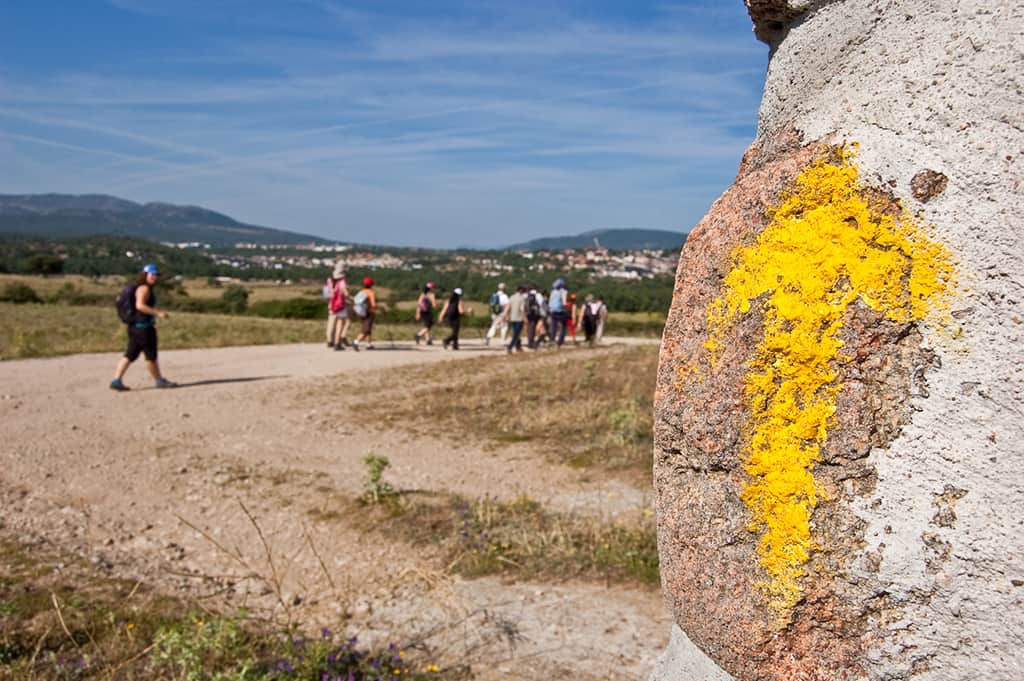
The famous yellow arrows, which now guide thousands of pilgrims, weren’t always part of the Jacobean route. Their appearance is relatively recent and thanks to the efforts of Elías Valiña, a priest from O Cebreiro.
In the early 1980s, Valiña took it upon himself to revive and mark the Camino, which had become largely forgotten and poorly marked. To help walkers navigate, he began painting yellow arrows at strategic points like junctions and forks in the path.
This initiative became a key element in allowing pilgrims to follow the route safely and confidently.
The greeting “Ultreia”: encouragement among pilgrims
“Ultreia“ is a traditional greeting among pilgrims. It comes from Latin and means “Let’s go further!”. This term, used to encourage one another during the pilgrimage, appears in the Codex Calixtinus, one of the most important works related to the route.
When a pilgrim greeted another by saying “Ultreia”, the response was “Et suseia”, which means “And further still!”.
The Botafumeiro: a symbol of purification
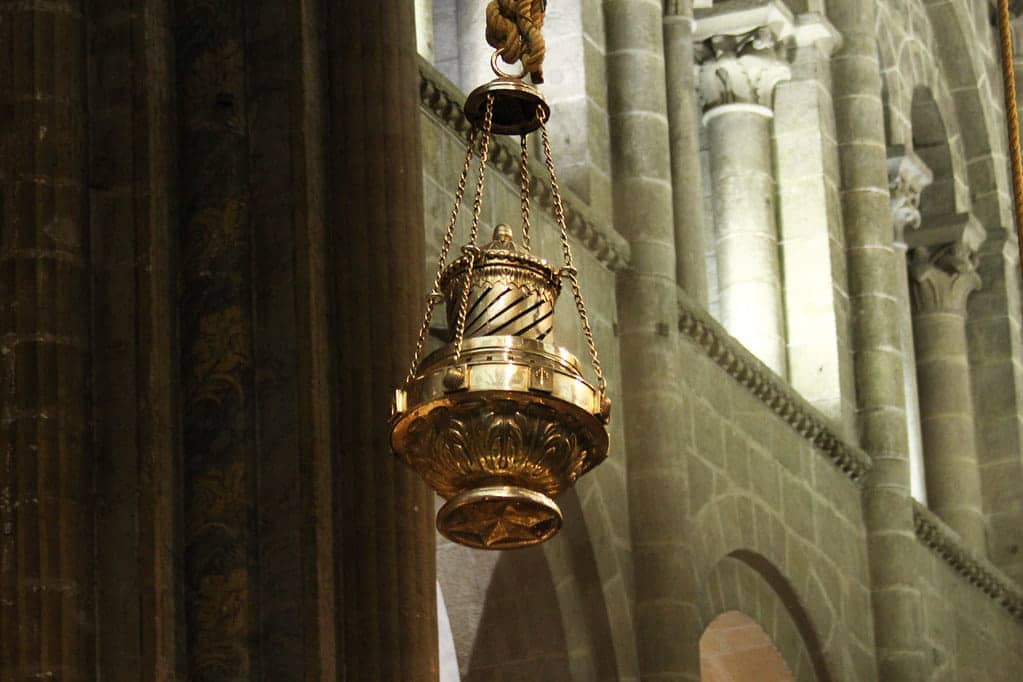
In the Cathedral of Santiago de Compostela, the Botafumeiro is one of the most impressive elements. This enormous censer, weighing 53 kilos and measuring 1.5 metres, is swung by a team of people during certain ceremonies.
Originally, its function was to purify the air inside the cathedral after the arrival of pilgrims who, following long days of walking, didn’t always arrive in the best condition.
The Wine Fountain in Ayegui
In the Navarrese town of Ayegui, next to the Monastery of Irache, lies a very special fountain: the Wine Fountain. Supplied daily with 100 litres of young red wine by the Irache Winery, it offers free wine to pilgrims travelling the Camino route.
The tradition has historical roots, as the Benedictine monks of Irache used to offer wine to travellers as a restorative. Officially established in the 1990s, the fountain has become a symbol of hospitality and joy, with a sign encouraging visitors to toast to happiness.
Although the wine is only available in the mornings and in limited quantities to prevent misuse, the fountain also offers water for those who prefer a traditional refreshment. It is open every day from 8 a.m. to 8 p.m., and those interested can collect a commemorative stamp at the winery or at the Wine Museum.
Cruz de Ferro: Leaving burdens behind
Cruz de Ferro is a cross located at the highest point of the French Way of the Camino de Santiago, at around 1,500 metres above sea level, between the Spanish towns of Foncebadón and Manjarín in León. It consists of a wooden post about five metres tall topped with an iron cross.
At its base, over the years, a mound of stones has formed. Legend has it that when the Cathedral of Santiago de Compostela was being built, pilgrims were asked to bring a stone to contribute. Nowadays, the tradition is to throw a stone, brought from the pilgrim’s home, backwards over the shoulder towards the cross to symbolise leaving one’s burdens behind.
Portomarín: The town that moved stone by stone
Portomarín, in the province of Lugo, is a clear example of the word “rebirth”. The town featured an incredible 12th-century Romanesque church and other historic buildings which were threatened by the rising water level due to the construction of the Belesar reservoir in the 1960s.
To preserve them, they were relocated stone by stone to a new, higher location, where they were safe from flooding. This monumental effort made it possible to conserve the area’s historic and architectural heritage.
The chimes of the Berenguela Tower
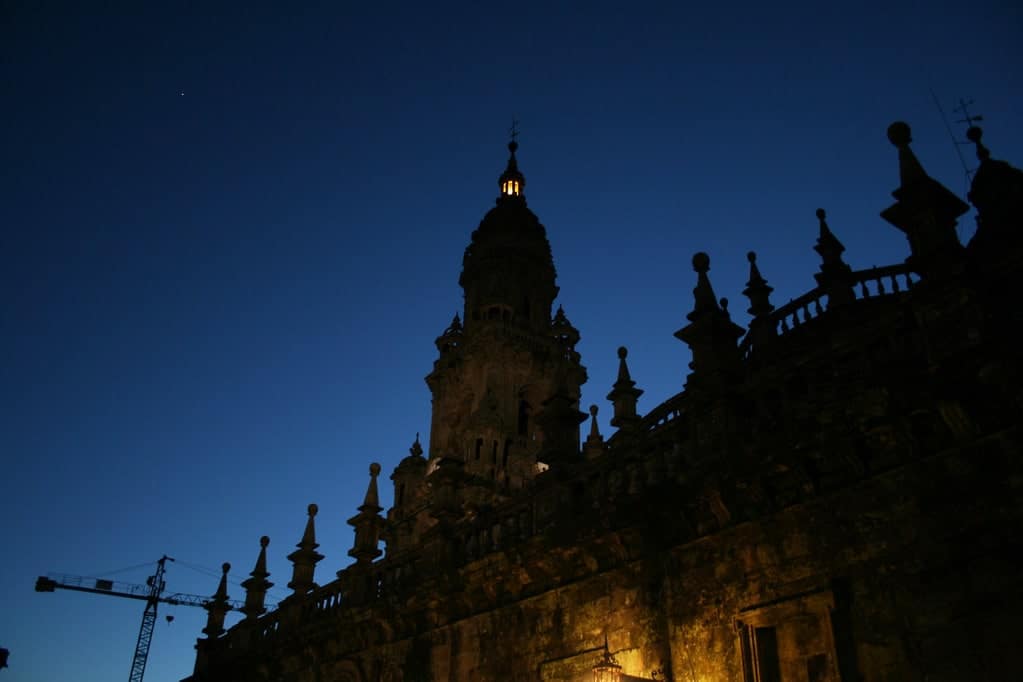
In the Cathedral of Santiago de Compostela, the Berenguela Tower houses a clock which, according to legend, if it chimes 13 times at midnight, allows the devil to roam freely through the city for an entire hour. This myth adds a touch of mystery to the already magical experience of reaching Santiago.
The Game of the Goose and the Camino de Santiago
There is a rumour that the Game of the Goose has its origins in the Camino de Santiago. It is said that each stage of the Camino is represented by a square in the game, and that the geese symbolise safe places or resting points for pilgrims. This theory suggests the game was a way to teach pilgrims about the dangers and refuges along the Camino in a playful way.

